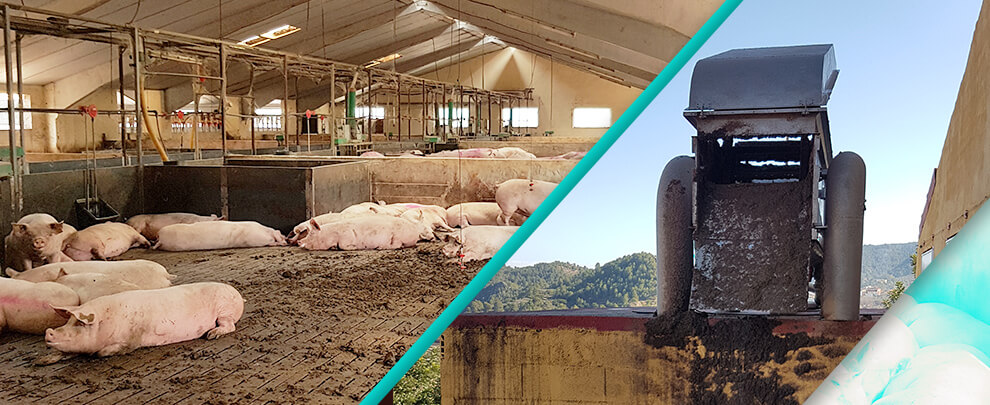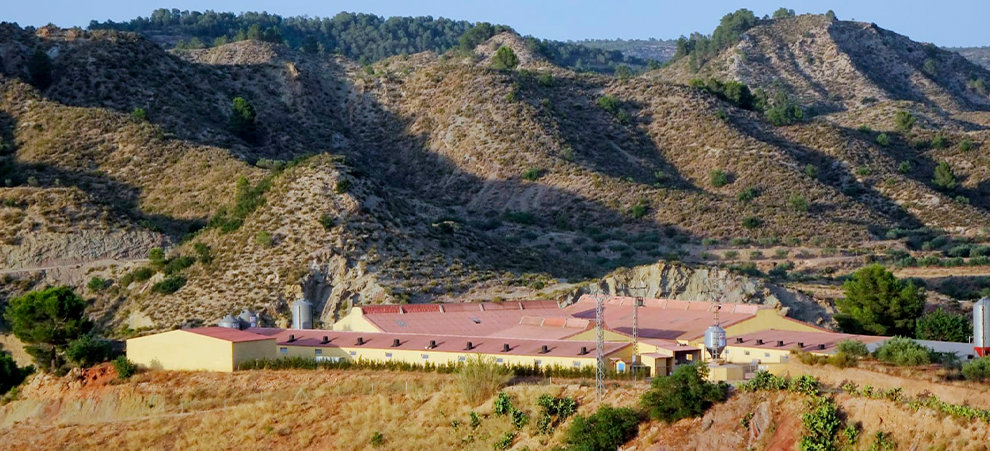Blog
Blog

C. Albuixech: "Tecnapur is a straightforward, low-consumption system"
29 of October of 19 - Success stories
More than 30 years ago, Carlos Albuixech García took over the generational relay of pork production, originally from the paternal line. It was in 1986, at the end of his professional training, when Carlos got wholly involved in the running of the farm, demonstrating his commitment to sustainability.
How long ago did you decide to install a system for mechanical separation of slurry?
In 2008, I decided to move the farm two kilometres from Quesa, to increase biosecurity measures. Besides conforming to the laws, my goal was to have a self-reliant farm with plans for the future. So, I considered the option of separating livestock droppings, as I use a lot of the slurry mixed with water in my working setup to irrigate alfalfa and other crops. If I hadn't decided to separate the slurry, I would have had to do the manual mixing with water and work with a bucket. It was then, that same year, at the Zaragoza Trade Fair, that I discovered the Rotecna Tecnapur system. I had been working with the company for several years, and they had told me about it. When I saw that the procedure presented by the product was simple, I decided to try it, and the truth is that it works very well. Now, we are considering the installation of the next phase, the physicochemical treatment. My idea is to complete the cycle, as I would like to install a sprinkler irrigation system to use less water. I have one hectare of alfalfa, which means that it is a plant that needs a lot of water and nutrients, and the slurry covers this. When I installed the first phase of Tecnapur, I had already planned its distribution with the possibility of accommodating the second level soon. Today, although I have not yet started the process, I have a pending visit to a nearby farmer who has installed the physicochemical reactor on his farm and is very satisfied with the results.
Why did you decide on Tecnapur Solids Separator?
I had several offers from other systems on the table and had started estimating the costs. The problem is that all the prices, including the cost of maintenance, were very high, and the machinery seemed too complicated. Then, as I have already mentioned, Rotecna suggested the Tecnapur system at the Zaragoza Trade Fair, where I was able to verify the simplicity of its mechanics and see how it worked.
What other advantages would you highlight of the Tecnapur system compared to others in the market?
Besides the simplicity of the mechanics, its low maintenance and energy consumption. It is also necessary to make sure that energy consumption is minimal, as it takes many hours to process the slurry. Aside from that, another thing that convinced me was the technical advice, the guarantee and the bespoke assistance offered.
How many cubic metres of slurry do you process per day?
Every week we reach about 60,000 cubic meters. Regarding solids, we obtain between 6 and 7 tons. These results can be attributed to the entire production model of my farm, as we have the Rotecna level valve installed, and therefore there are very few water losses, which means significant savings.
 The exploitation of Carlos Albuixech, located in Quesa (Valencia), has 184 mothers and 2,100 weaning places.
The exploitation of Carlos Albuixech, located in Quesa (Valencia), has 184 mothers and 2,100 weaning places.
From how many different fittings does the slurry treated by the separator derive?
It proceeds from maternity, from the gestation room which measures up to 50x22 meters wide, from the covering phase and then from the weaning shed. As a result, the slurry comes from four places. The replacement section is not connected to the system because it is a room which is more isolated than the rest. In that case, I take out the slurry with a bucket and add it to the pool. In this procedure, I can extract up to three barrels a month.
Compared to the initial volume, what percentage do you get from each segment?
The separation makes it possible to reduce the volume of the slurry by up to 15% and to obtain, for every 1,000 litres, 150 litres in solid form with a 20-25 % dryness and 850 litres in the overflow. The solid phase is odourless and takes up to 20% total Kjeldahl nitrogen (NTK), 50% total phosphorus (PT), and 20% potassium (K) from the original slurry. Therefore, it separates up to an overall 55 % of solids.
What makes each of the divisions?
Most of the slurry I get is liquid, which I use to irrigate crops and alfalfa. Although the solid portion is not for sale, I distribute it free of charge to different people in the town, since in Quesa most people have crops, and so I don't have to carry the excrement to any deposit.
At an operational level, what is the separation cost?
The machine has an electrical consumption of less than 0.75 kW/hour, as it is composed of a single motor of 1 CV at 220/380 V. It works automatically, with very little maintenance and doesn't require a skilled workforce. The maintenance of the machine is minimal.






